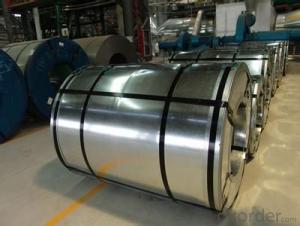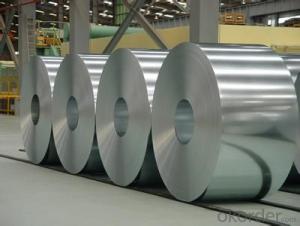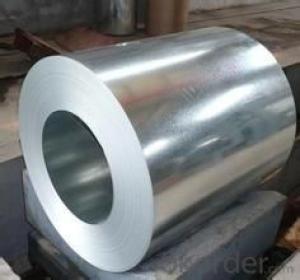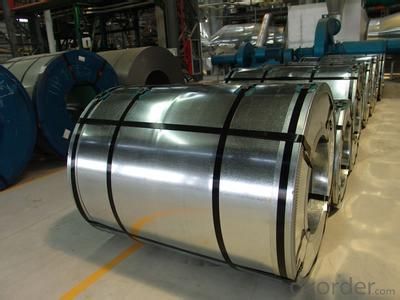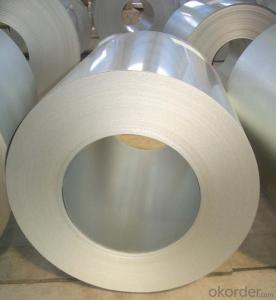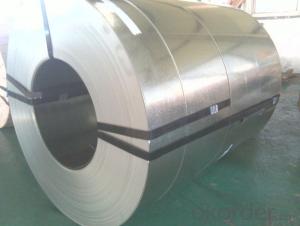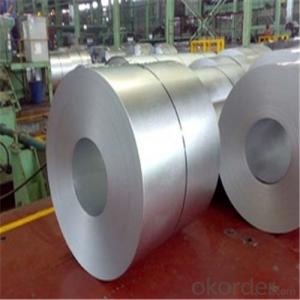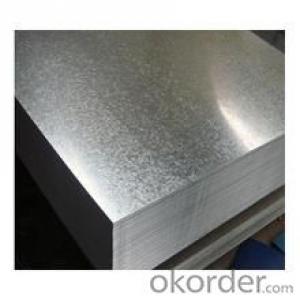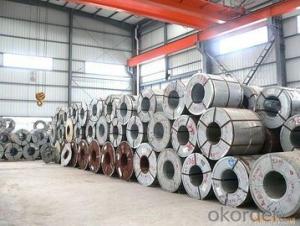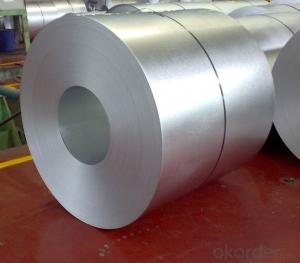Best Hot-dip Aluzinc Steel Building Roof Walls with Good price
- Loading Port:
- China main port
- Payment Terms:
- TT or LC
- Min Order Qty:
- 50 m.t.
- Supply Capability:
- 10000 m.t./month
OKorder Service Pledge
OKorder Financial Service
You Might Also Like
Best Hot-dip Aluzinc Steel Building Roof Walls with Good price
1. Description of Best Hot-dip Aluzinc Steel Building Roof Walls with Good price:
Hot-dip aluzinc steel structure is composed of aluminum-zinc alloy, consisting of 55% aluminum, 43% zinc and 2% at 600 ℃ silicon solidification temperature and composition, the entire structure is made of aluminum - iron - silicon - zinc, to form a dense quaternary crystals an alloy.
Hot-dip aluzinc steel has many excellent features: strong corrosion resistance, is three times the pure galvanized sheet; zinc surface with beautiful flowers, can be used as a building outside board.
Applications of hot-dip aluzinc steel:
1)Building: roof, walls, garages, soundproof walls, pipes and modular housing.
2)Automotive: muffler, exhaust pipes, wiper accessories, fuel tank, truck boxes, etc.
3)Appliances: refrigerator back, gas stove, air conditioners, microwave oven, LCD frame, 4)CRT-proof band, LED backlight, electrical cabinets, etc.
5)Farm: barn, sheds, silos, piping and other greenhouse.
2.Main Features of the Hot-dip Aluzinc Steel:
• Excellent corrosion resistance
• High temperature oxidation resistance
• Good manufacturability
•Cost-effective
3.Hot-dip Aluzinc Steel Images

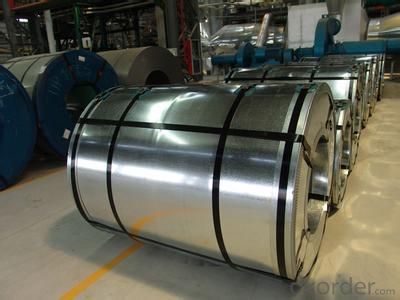
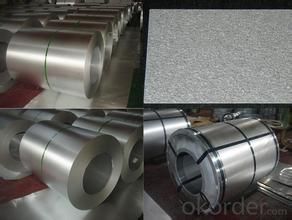
4.Hot-dip Aluzinc Steel Specification
AVAILABLE SPECIFICATION
HOT-DIP ALUZINC STEEL COILS | |
THICKNESS | 0.16mm-3.5mm |
WIDTH | 1250mm MAX |
COATING MASS | 30g/ m2-185 g/ m2 |
SPANGLE | Regular Spangle, Minimized Spangle, Zero Spangle |
SURFACE TREATMENT | Chromated / non-chromated, Oiled / non-oiled, Anti Finger Print |
COIL INNER DIAMETER | 508mm or 610mm |
5.FAQ of Our Steel
We have organized several common questions for our clients,may help you sincerely:
1.What advantages does your company have?
Cement : Annual capacity of 400 million tons, No. 1 in the world
Composite Materials — Rotor Blade: Annual production capacity of 15,000 pieces, No.1 in China, Top3 worldwide
Commercial concrete: Annual capacity of 0.35 billion cubic meters, No. 1 in the world.
Refractory Material: Annual capacity of 40,000 tons casting refractory, No.1 in the world.
2.What advantages do your products have?
Firstly, our base material is of high quality, Their performance is in smooth and flat surface,no edge wave ,good flexibility.
Secondly, high quality zinc ingoats, 97.5% zinc,1.5% silicon,1% others, the same zinc coating measured by metal coating thickness or by zinc weight
Thirdly, high precision: Tolerance strictly according to ASTM or JISG standard even more rigid.
We have full stes of testing equipment(for t best, cupule,chromatism,salt spray resistance, etc) and professional engineers.
- Q: What are some of the greatest steel guitar songs in the history of country music. Western swing applies also.
- Bob okorder /
- Q: i'm looking into pedal steel guitars, and I would like some suggestions or links and info on what kind i should get.
- Try okorder -The Art of Steel Guitar/ Steel guitar players -Take it away Leon- McAuliffe and 'Speedy West' were a couple greats. In the late '50s, Speedy was playing a Fender 1000 Pedal steel. He often did duets with Jimmy Bryant The Fastest Guitar Player In The Country! / note also the 'Emmons Guitar Company':
- Q: The guy at this one pawn shop told me that stainless steel is better because it is just as strong and will not rust. The guy at the other pawn shop said that you need high carbon steel for a good sword because stainless steel breaks easily and that damascis is the best kind of steel for swords.
- Modern Sword Steels: Stainless - Used in decorative swords and knives. Stainless steel blades longer than twelve inches are too brittle for full contact use. 1045 Carbon - Strong, but soft compared to higher carbon steels. Reasonably cheap and acceptable for full contact use. 1060 Carbon - Harder than 1045, but not brittle. Holds a keen edge and is very durable. Somewhat expensive, but great for full contact use. 1095 Carbon - Sacrifices the durability of lower carbon steels for better edge retention and increased hardness. Somewhat expensive, but tough enough for full contact use. 5160 Spring - Extremely tough and durable. Great for full contact use when properly heat treated. 9260 Spring - Amazingly resilient and durable, but not unbreakable. Excellent for full contact use. T10 Tool - Exceptionally hard and tougher than other steels with similar carbon content. Keeps a good edge without sacrificing durability. Can be expensive, but is still great for full contact use. L6 Bainite - Can be very expensive, but is the toughest steel on the market when properly heat treat. Excellent for full contact use, but requires additional maintenance to prevent rust and corrosion. About Damascus Steel: Historical Damascus blades were made from wootz, an Indian steel with unique properties. The technique for making this type of steel has been lost, but there have been many attempts to recreate it. The patterns found on Damascus steel blades are a direct result of the sword-making process and are not entirely dependent on the type of steel used. Damascus swords were the finest blades of their time.
- Q: What is the average shelf life of a painted steel coil?
- The average shelf life of a painted steel coil can vary depending on various factors such as the quality of paint used, environmental conditions, and storage practices. However, under normal conditions, the average shelf life of a painted steel coil is typically around 1 to 2 years.
- Q: What are the advantages of using hot-rolled steel coils?
- Hot-rolled steel coils offer several advantages. Firstly, they have a higher strength-to-weight ratio, making them suitable for applications that require strong and durable materials. Secondly, hot-rolled steel coils have better formability, allowing for easier shaping and manipulation during fabrication. Additionally, these coils have a smoother surface finish, making them more aesthetically appealing and suitable for applications that require a polished appearance. Lastly, hot-rolled steel coils are generally more cost-effective compared to other steel manufacturing processes, making them a preferred choice for various industries.
- Q: How are steel coils used in the production of medical equipment?
- Steel coils are used in the production of medical equipment in a variety of ways. One common use is in the manufacturing of surgical instruments. Many surgical instruments, such as scalpels, forceps, and clamps, require a sharp and durable cutting edge. Steel coils are used to create these cutting edges, as they can be easily shaped, hardened, and sharpened to ensure precision and longevity. Additionally, steel coils are often used in the production of medical devices such as braces, orthopedic implants, and prosthetics. These devices require materials with high strength and durability to support and stabilize the body. Steel coils can be formed into different shapes and sizes to meet the specific needs of patients, providing the necessary support and functionality. Furthermore, steel coils are used in the production of medical equipment such as MRI machines and X-ray systems. These machines require strong and reliable components to ensure accurate imaging and diagnostics. Steel coils are used in the construction of these machines to provide stability and structural support, allowing for precise and high-quality imaging. In summary, steel coils play a crucial role in the production of medical equipment by providing strength, durability, and versatility. From surgical instruments to orthopedic devices and diagnostic machines, steel coils are utilized to create reliable and high-performing medical equipment that ultimately improves patient care and outcomes.
- Q: I am getting a barn soon and I was debating between wood, and steel. I think steel would look nicer [painted of course] and I was wondering which is cheaper. Any extra info would be great. Thanks x
- Steel okorder /
- Q: What are the challenges in storing and handling steel coils?
- Storing and handling steel coils present several challenges, including their sheer weight and size, which can make transportation and storage difficult. The coils need to be stored in a way that prevents damage and deformation, as steel coils are susceptible to rust, corrosion, and scratching. Additionally, ensuring proper ventilation and moisture control is crucial to prevent the growth of mold or moisture-related damage. Safety precautions must also be taken during handling and transportation to avoid accidents or injuries.
- Q: I'm looking for steel to make knives, but don't know what to get.
- high carbon steel is the best for a knife
- Q: How do steel coil manufacturers minimize waste and maximize efficiency?
- Combining advanced technology, process optimization, and waste management practices allows steel coil manufacturers to minimize waste and maximize efficiency. One effective method is to employ advanced automation and control systems during production. These systems can monitor and adjust parameters like temperature, pressure, and speed to ensure optimal operation. By closely monitoring and controlling these factors, manufacturers can reduce defects and errors, thus minimizing waste. Another approach is to adopt lean manufacturing principles, which involve eliminating non-value-adding activities and streamlining the production process. By analyzing the entire workflow, manufacturers can identify areas for improvement, such as reducing setup times, eliminating bottlenecks, and optimizing material flow. This results in a more efficient and streamlined production process, reducing waste and increasing efficiency. Additionally, effective waste management practices can be implemented. This includes proper handling and disposal of waste materials, as well as implementing recycling programs. By separating and recycling materials like scrap metal, manufacturers can minimize waste generation and reduce environmental impact. Collaborating with recycling companies ensures proper management and recycling of waste materials. In conclusion, steel coil manufacturers can achieve waste reduction and efficiency maximization by utilizing advanced technology, implementing lean manufacturing principles, and adopting effective waste management practices. Continuously striving for improvement and optimization in processes enables manufacturers to reduce waste, increase productivity, and ultimately achieve higher levels of efficiency.
Send your message to us
Best Hot-dip Aluzinc Steel Building Roof Walls with Good price
- Loading Port:
- China main port
- Payment Terms:
- TT or LC
- Min Order Qty:
- 50 m.t.
- Supply Capability:
- 10000 m.t./month
OKorder Service Pledge
OKorder Financial Service
Similar products
Hot products
Hot Searches
Related keywords
